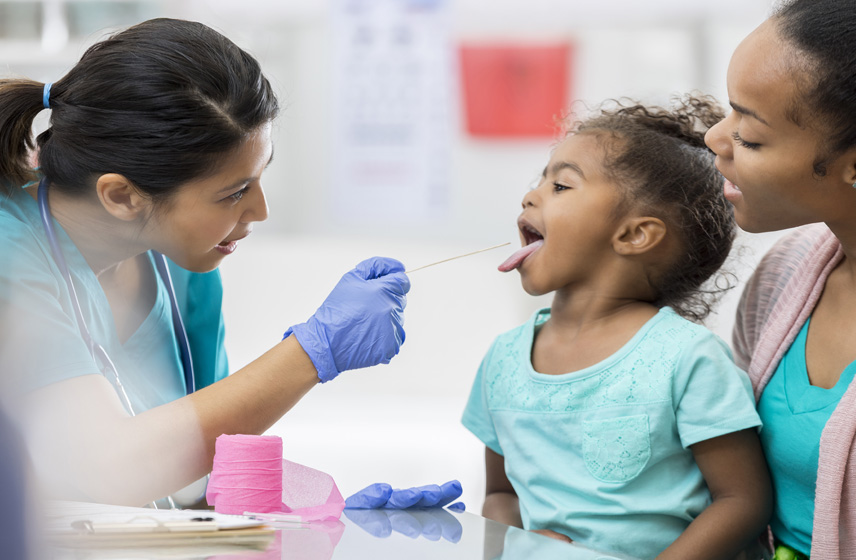RSV is a respiratory infection caused by a virus. Babies, kids and adults can get it. It can cause mild symptoms, but sometimes — especially in babies and older adults — it can lead to severe difficulty breathing. Babies can get a monoclonal antibody treatment to help protect them. There’s a vaccine available for adults over 60 and pregnant women.
Advertisement
Cleveland Clinic is a non-profit academic medical center. Advertising on our site helps support our mission. We do not endorse non-Cleveland Clinic products or services. Policy
RSV is a respiratory illness that can cause cold-like symptoms or, sometimes, serious illness. RSV stands for respiratory syncytial (sin-SISH-uhl) virus, the germ that makes you sick with RSV. Almost everyone gets it for the first time before the age of 2. But the protection (immunity) you get from being infected doesn’t last, so you can get it more than once.
Advertisement
Cleveland Clinic is a non-profit academic medical center. Advertising on our site helps support our mission. We do not endorse non-Cleveland Clinic products or services. Policy
RSV is more common than you might think. We most often hear about babies getting severely ill from RSV, but adults and kids of all ages get it. Infants are more likely to get very sick from RSV because their immune systems are still developing. Their smaller airways are also more likely to get inflamed.
You can also get RSV many times throughout your life — sometimes even twice in one year. For adults, it usually causes mild, cold-like symptoms. But adults over 65 and people with compromised immune systems are at a higher risk for serious illness.

Symptoms in babies or young kids might look a little different. They might seem fussy or irritable, or they might not want to play as they usually would. Contact your healthcare provider if your child is younger than a year old and has RSV symptoms.
Go to an emergency room if you or your child has severe symptoms. These include:
Advertisement
A virus — respiratory syncytial virus — causes RSV. It’s not caused by bacteria. RSV spreads through:
Yes, RSV is contagious while you have symptoms — usually three to eight days. RSV spreads easily from person to person. It can live on hard surfaces, like tables, for several hours.
You may be able to spread RSV a day or two before you develop symptoms. Babies and people with compromised immune systems may be contagious even after symptoms go away, for up to four weeks.
RSV can cause complications that make it hard to breathe. They include:
Babies born early (preterm) and kids under 2 years old have smaller airways and are more likely to get severely sick from RSV. You’re also at a higher risk if you:
A healthcare provider swabs your nose with a soft-tipped stick to test for RSV. They may get a chest X-ray to look for pneumonia and other complications.
There’s no specific treatment for RSV. If you or your child has severe RSV, you may need to stay in the hospital to recover. There, providers might help you get better with:
Antibiotics don’t treat RSV since it’s a virus.
Call a pediatrician if your child has RSV symptoms and is under 12 months old. You should also call if your child has any of the following:
Adults can often manage RSV symptoms on their own. Call a healthcare provider if you have symptoms and at least one of the following applies to you:
Advertisement
Your provider will let you know if you should come in for a checkup and what severe symptoms to look out for.
Go to an emergency room if you or your child has severe RSV symptoms. These include signs of difficulty breathing — like wheezing, flaring nostrils, chest retractions, or bluish or grayish skin color.
RSV can last a week or two. You might have a lingering cough for a while. Severe cases of RSV may last longer.
If you have mild symptoms, you can take care of yourself at home with:
Always check with your provider or your child’s pediatrician before using any medications or giving them to kids.
There are some things you can do to help protect yourself from RSV. Babies up to 8 months old and some toddlers at high risk can get a monoclonal antibody immunization. This gives them antibodies that can help them fight off an RSV infection.
Pregnant women and adults 75 and older (or 60 and older with certain health conditions) are eligible for RSV vaccines. Talk to your healthcare provider about what’s best for you and your family.
Advertisement
Other steps you can take include:
RSV can be as mild as a cold. Or it can turn into something more serious. The important thing is to keep an eye out for signs of serious illness. If you feel something isn’t right — even if you think you or your child just has a cold — don’t hesitate to call a provider or seek emergency care.
Advertisement
Need care fast? Cleveland Clinic’s Express Care and Urgent Care locations treat everything from sprains to sinus infections — no appointment needed.

Last reviewed on 05/07/2025.
Learn more about the Health Library and our editorial process.